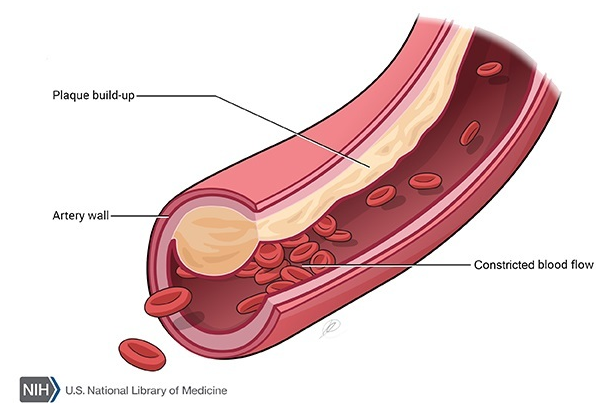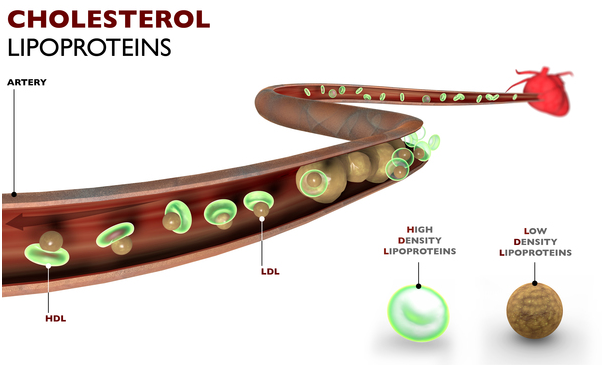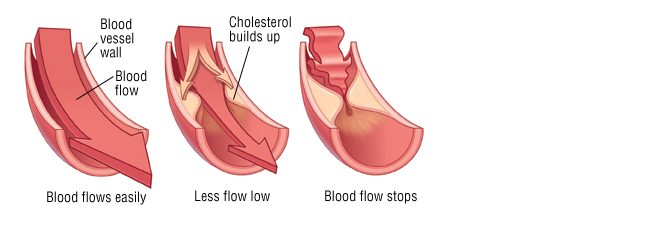What Is It?
Hypercholesterolemia is a condition characterized by very high levels of cholesterol in the blood. Cholesterol is a waxy, fat-like substance that is produced in the body and obtained from foods that come from animals (particularly egg yolks, meat, poultry, fish, and dairy products). The body needs this substance to build cell membranes, make certain hormones, and produce compounds that aid in fat digestion. Too much cholesterol, however, increases a person's risk of developing heart disease.
The fat and cholesterol you eat are absorbed in the intestine and transported to the liver. The liver converts fat into cholesterol, and releases cholesterol into the bloodstream. There are two main types of cholesterol: low-density lipoprotein (LDL) cholesterol (the "bad" cholesterol) and high-density lipoprotein (HDL) cholesterol (the "good" cholesterol).
People with hypercholesterolemia have a high risk of developing a form of heart disease called coronary artery disease. This condition occurs when excess cholesterol in the bloodstream is deposited in the walls of blood vessels, particularly in the arteries that supply blood to the heart (coronary arteries). The abnormal buildup of cholesterol forms clumps (plaque) that narrow and harden artery walls. As the clumps get bigger, they can clog the arteries and restrict the flow of blood to the heart. The buildup of plaque in coronary arteries causes a form of chest pain called angina and greatly increases a person's risk of having a heart attack.

Inherited forms of hypercholesterolemia can also cause health problems related to the buildup of excess cholesterol in other tissues. If cholesterol accumulates in tendons, it causes characteristic growths called tendon xanthomas. These growths most often affect the Achilles tendons and tendons in the hands and fingers. Yellowish cholesterol deposits under the skin of the eyelids are known as xanthelasmata. Cholesterol can also accumulate at the edges of the clear, front surface of the eye (the cornea), leading to a gray-colored ring called an arcus cornealis.
Symptoms
Most people with high cholesterol don't have any symptoms until cholesterol-related atherosclerosis causes significant narrowing of the arteries leading to their hearts or brains. The result can be heart-related chest pain (angina) or other symptoms of coronary artery disease, as well as symptoms of decreased blood supply to the brain (transient ischemic attacks or stroke).
About 1 out of every 500 people has an inherited disorder called familial hypercholesterolemia, which can cause extremely high cholesterol levels (above 300 milligrams per deciliter). People with this disorder can develop nodules filled with cholesterol (xanthomas) over various tendons, especially the Achilles tendons of the lower leg. Cholesterol deposits also can occur on the eyelids, where they are called xanthelasmas.
Diagnosis
Your doctor will ask if anyone in your family has had coronary artery disease, high cholesterol or diabetes. The doctor will ask about your diet and if you have ever smoked. He or she will check your blood pressure and look for xanthomas and xanthelasmas. Your doctor can confirm a diagnosis of high cholesterol with a simple blood test.


Hi! I am a robot. I just upvoted you! I found similar content that readers might be interested in:
https://ghr.nlm.nih.gov/condition/hypercholesterolemia
This user is on the @buildawhale blacklist for one or more of the following reasons: